Grindelwald
Grindelwald is a village and municipality in the Interlaken-Oberhasli administrative district in the canton of Berne. In addition to the village of Grindelwald, the municipality also includes the settlements of Alpiglen, Burglauenen, Grund, Itramen, Mühlebach, Schwendi, Tschingelberg and Wargistal.
Grindelwald village is located at 1,034 m (3,392 ft) above sea level. Mentioned for the first time in 1146, it has become an important tourist destination of both Switzerland and the Alps since the golden age of alpinism in the 19th century. It is overlooked by a section of the Bernese Alps from the Wetterhorn to the Eiger, which create a natural barrier. Together with the adjacent valley of Lauterbrunnen, the valley of Grindelwald forms part of the Jungfrau Region of the Bernese Oberland, between Interlaken and the main crest of the Bernese Alps.
Similarly to Lauterbrunnen, Grindelwal...Read more
Grindelwald is a village and municipality in the Interlaken-Oberhasli administrative district in the canton of Berne. In addition to the village of Grindelwald, the municipality also includes the settlements of Alpiglen, Burglauenen, Grund, Itramen, Mühlebach, Schwendi, Tschingelberg and Wargistal.
Grindelwald village is located at 1,034 m (3,392 ft) above sea level. Mentioned for the first time in 1146, it has become an important tourist destination of both Switzerland and the Alps since the golden age of alpinism in the 19th century. It is overlooked by a section of the Bernese Alps from the Wetterhorn to the Eiger, which create a natural barrier. Together with the adjacent valley of Lauterbrunnen, the valley of Grindelwald forms part of the Jungfrau Region of the Bernese Oberland, between Interlaken and the main crest of the Bernese Alps.
Similarly to Lauterbrunnen, Grindelwald is connected to Interlaken by the Bernese Oberland Railway and is the start of the Wengernalp Railway, leading to Kleine Scheidegg. The latter resort is the start of the Jungfrau Railway, the highest railway in Europe and a gateway to the Jungfrau-Aletsch protected area.
Grindelwald was first mentioned in 1146 as Grindelwalt.[1] This designation is probably derived from the Old High German words "grintil" (bar, barrier) and "walt" (forest), thus describing the nature of the valley. According to a legend, the name Grindelwald comes from two monks of the Interlaken Monastery. After exploring the Lütschinen valleys, they are said to have reported about "Grinden" and "Wald", i.e. "stones" and "forests". This was initially the explanation for the origin of the name.[2]
 A depiction of Grindelwald in the 18th century by Niklaus Sprüngli
A depiction of Grindelwald in the 18th century by Niklaus Sprüngli Grindelwald's first hotel, the "Black Eagle", with Wetterhorn and Upper Grindelwald Glacier, c. 1870. Etching by Heinrich Müller
Grindelwald's first hotel, the "Black Eagle", with Wetterhorn and Upper Grindelwald Glacier, c. 1870. Etching by Heinrich MüllerThe oldest traces of a settlement in the area are scattered neolithic tools which have been discovered around Grindelwald village. Several Roman era coins have also been found in the municipality. A castle was built on the Burgbühl hill above the village during the High Middle Ages.[1]
In 1146, King Conrad III granted estates in Grindelwald to Interlaken Monastery. In the late 12th century, the barons of the alpine valleys in what became the Berner Oberland went to war against the expansionist Duke Berthold V of Zähringen. The Duke defeated a coalition of nobles in the Grindlewald valley in 1191. His victory allowed him to expand Zähringen power into the Oberland, to expand the city of Thun and found the city of Bern. Beginning in the 13th century, Interlaken Monastery began to purchase rights and land in Grindelwald and eventually forced the local nobles out of the valley. The Monastery continued to exert influence in the village and in 1315 and again in 1332 ordered the villagers to raid Unterwalden to further the political ambitions of the Abbot's patrons. In response to the raids, in 1342, Unterwalden attacked Grindelwald. A few years later, in 1348–49, the villagers joined in an unsuccessful rebellion against ecclesiastical power. In 1528, the city of Bern adopted the Protestant Reformation and proceeded to spread the new faith in Grindelwald against the populations' wishes. Berne was able to impose its will, converted the village and secularized Interlaken Abbey and the Abbey's lands. Grindelwald became part of the bailiwick of Interlaken, under a Bernese bailiff.[1]
The first village church was a wooden building from the mid-12th century. The wooden building was replaced with the stone St. Mary's Church in 1180. This church was replaced in the 16th century, and the present church was built in 1793.[1] On August 18, 1892, a large part of the village was destroyed by a fire. That day, which followed a drought period, a violent foehn storm was raging. Within two hours, 116 buildings in the Grindelwald valley were destroyed and 412 residents became homeless.[3]
 1909 view of the valley from the Wetterhorn Elevator
1909 view of the valley from the Wetterhorn ElevatorThe tourism industry began in Grindelwald in the late 18th century as foreigners discovered the scenic town. Pictures of the vistas were widely reprinted, quickly making the village internationally famous. In the 19th century many Englishmen came to the village to climb the alpine peaks around the valley. The Finsteraarhorn (4,274 m [14,022 ft]), the Wetterhorn (3,692 m [12,113 ft]), the Eiger (3,967 m [13,015 ft]), the Schreckhorn (4,078 m [13,379 ft]) and the Gross Fiescherhorn (4,049 m [13,284 ft]) were all climbed during the 19th century, an ascent of the Wetterhorn marking the beginning of the golden age of alpinism. The ascent of the north face of the Eiger, in 1938, was also a milestone in mountaineering history.
The Grindelwald road was built in 1860–72, and the Bernese Oberland railway reached the village in 1890, both of which transformed an arduous journey into a simple trip and allowed tourists to flood into the village. In 1888, Grindelwald was the first resort in the Bernese Oberland to also become a winter destination, attractions being sleigh rides, curling, skating and, from 1891, skiing. The first resort opened in 1888, there were 10 hotels in 1889, and by 1914 there were 33 in Grindelwald. A rack railway was built to Kleine Scheidegg in 1893, and it was expanded to the Jungfraujoch in 1912. Numerous ski lifts, cable cars, hiking trails and alpine huts were built in the late 19th and 20th centuries to allow tourists to explore the mountains, notably the Wetterhorn Elevator, one of the first modern aerial tramways. Today, almost the entire economy of Grindelwald is based on tourism.[1] The V-cableway, inaugurated in 2020, is the last major development in the valley.
The Grindelwald region has been the subject of scientific investigations, including in the "Alpine Studies" by the English alpinist W. A. B. Coolidge (1912) and in the Unesco research program Man and Biosphere of the Geographical Institute of the University of Bern on the effects of tourism (1979-1984).[1]
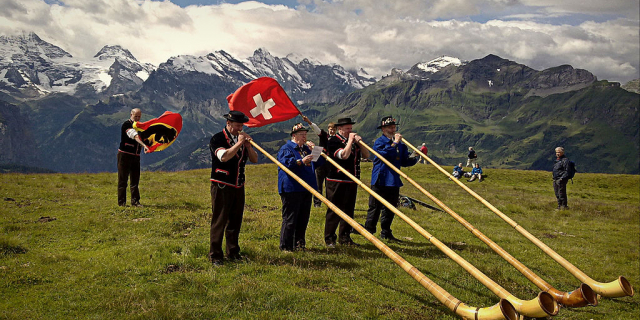

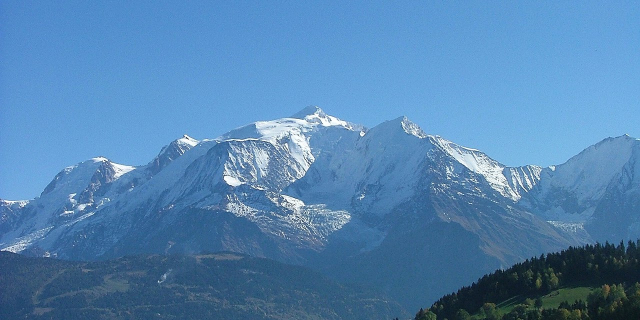



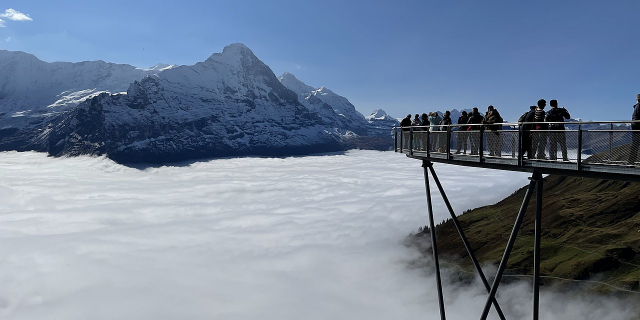
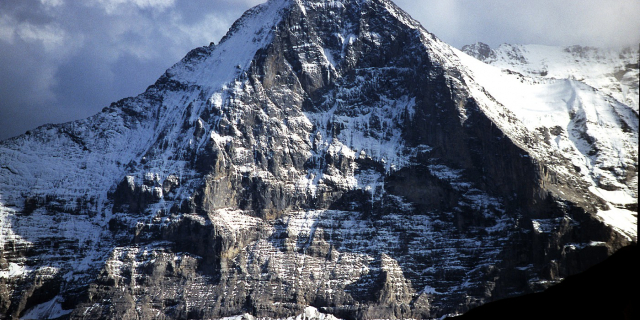

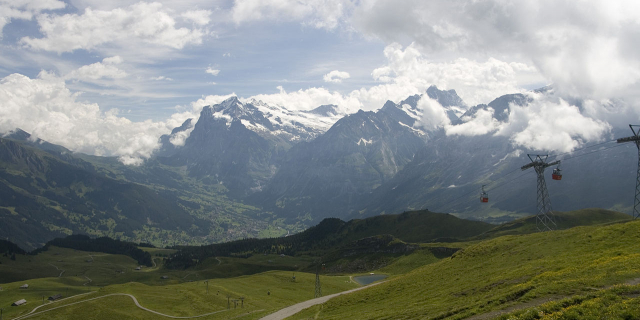




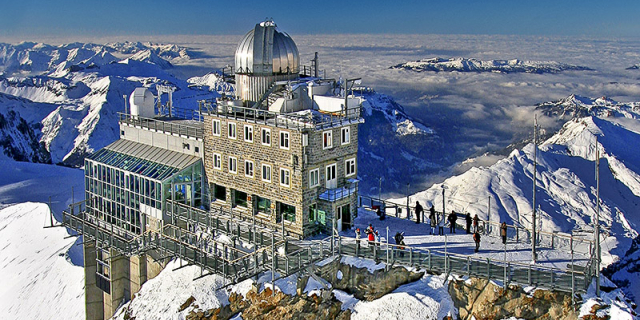

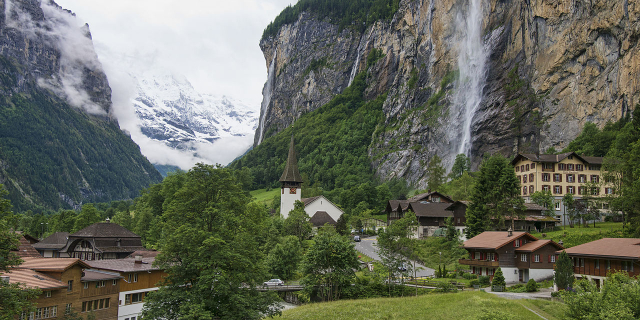

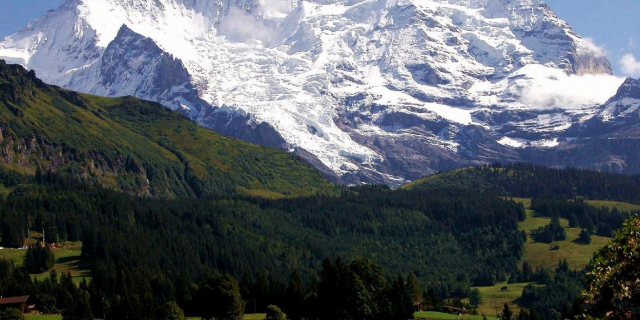





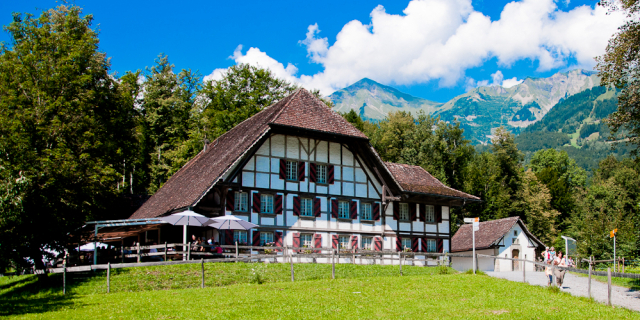


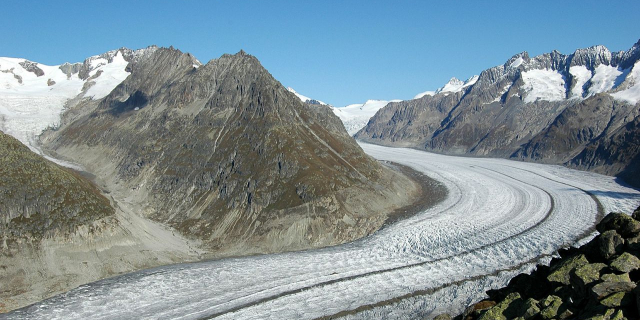



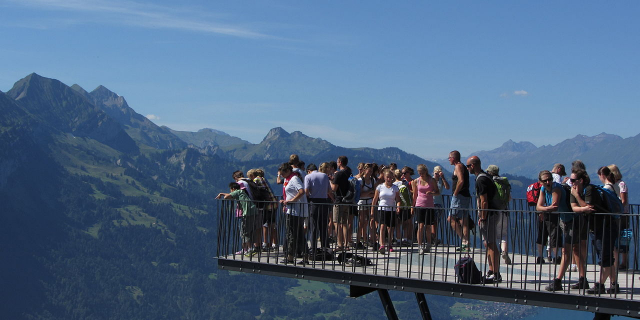
Add new comment